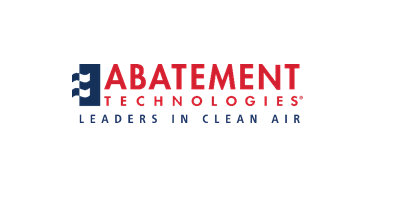Technology is transforming businesses around the world and solving challenges across various industries—particularly in healthcare where staying up to date with the latest advancements is imperative to patient care and long-term sustainability. However, with these updates often comes renovation and maintenance needs, and these projects are hard to do around patients and immunocompromised people. Construction dust, debris, and airborne contaminants can introduce dangerous pathogens into the air, causing serious risks when inhaled.
To protect patients during these projects, there are several recommendations hospitals can take to protect IAQ and ensure patient safety during construction:
1. Conduct a comprehensive ICRA
Hospital-acquired infections (HAIs) are a major concern. According to the World Health Organization (WHO), seven out of one hundred patients will acquire at least one HAI during their hospital stay. On average, one in every ten will die from their HAI. Because of the severity of the risks involved with construction, it is essential for hospitals to conduct a comprehensive planning and Infection Control Risk Assessment (ICRA) before every project. An ICRA will help identify potential hazards and will evaluate the impact of IAQ on patient safety. It’s important to identify any potential safety issues at the beginning of each project so there’s time to develop mitigation strategies and take preventative measures. This can include taking time to isolate, capture, and control the airborne pathogens.
2. Evaluate structural requirements
In addition to conducting an ICRA, it’s also important to examine the space around the planned project. Start by taking floor to ceiling measurements and determining the type of material the ceiling is made from. Then look for any bulkheads or structures that could make it difficult to incorporate when containing the space in the next step.
3. Contain the area
One way to maximize patient safety during a project is to effectively seal off the construction area from all surrounding areas. Contractors have traditionally constructed temporary containment systems with single-use materials like drywall, lumber, and poly sheeting. However, these materials require custom cuts and can’t be reused after each project.
To eliminate waste and save money, more contractors are turning to a modern solution—temporary modular containment walls. These solutions are durable, quick to install with less labor, and can be customized to fit specific areas, which allows construction projects to proceed more efficiently and without delays. Many hospitals, like Southern Health’s network of regional facilities, choose to keep temporary containment walls on site for rapid response in repairs and rapid installation.
4. Create negative pressure
With temporary modular containment walls in place, the next step is to create negative pressure to minimize the spread of contaminants outside of the construction zone. In conjunction with differential pressure monitors and portable air scrubbers, HEPA filters are essential in healthcare settings due to their ability to remove 99.9% of airborne particulates. Modular wall systems can maintain negative or positive pressure differentials to create a safer space both inside and outside of the contained space. HEPA filters are essential in healthcare due to their ability to capture 99.97 percent of ultra-fine microscopic particles that are as little as 0.3 microns in size, which is about 300 times smaller in diameter than a single strain of hair.
5. Conduct regular IAQ monitoring
It’s essential to continually monitor IAQ to identify potential hazards that could affect the health and safety of building occupants and workers. To do so, hospitals should deploy real-time IAQ monitoring systems that can not only track temperature but also pollutants, humidity levels, and particulate matter concentrates. Conducting these routine IAQ assessments enables prompt intervention when there are deviations from acceptable levels.
6. Consider disruptions
In hospitals, construction noise can be intolerable and disruptive to patients. Not only can a loud environment be distressing for patients, it can prevent them from getting rest that is crucial for their recovery. To remedy this, temporary modular containment walls are providing sound attenuating capabilities that can shield patients from disruptive construction noises and vibrations. And, as an added bonus, their attractive appearance can completely conceal the construction zone so that it doesn’t affect the clean aesthetic of the medical environment.
7. Educate patients and staff
While it’s not a requirement, it’s always a good idea to educate hospital staff and patients about the potential risks associated with construction activities and patient health. Knowing the risks upfront help healthcare professionals take measures to protect IAQ and comply with industry regulations. Hospitals should provide training sessions on recognizing the signs of poor IAQ and safety protocols during hospital construction projects. It’s important to establish clear communication to ensure everyone remains informed and vigilant.
8. Collaborate with experts
To assure projects run smoothly it’s important to establish collaborative partnerships with contractors and IAQ experts. Contractors and solutions providers with years of industry knowledge can offer guidance on the proper use and installation of containment equipment and accessories to help ensure patients are protected and each project runs as efficiently as possible. Combining the right tools with the right knowledge is the key to a successful hospital construction project.
9. Post-construction inspection
After each construction project, it’s important to conduct post-construction evaluations to assess IAQ performance and identify residual issues. This can involve conducting air quality tests and inspecting the HVAC system, which should be cleaned at the end of each project. A post-construction evaluation can help contractors address any issues before the space is rejoined with patient areas.
10. Continue to improve and adapt
Maintaining IAQ and patient safety is an ongoing process that requires continuous modification to changing circumstances. Hospitals should regularly review and update construction protocols based on research, technology advancements, and regulatory changes. By staying proactive and responsive, healthcare facilities can maintain the safety of patients and staff.
Overall, protecting IAQ and patients during hospital construction is crucial to maintaining the high standards of patient care and minimizing health risks. By implementing IAQ protective measures, hospitals can effectively mitigate the impact of construction activities on healthcare, creating a safe environment for all. Investing in proactive solutions mitigates the impact of construction activities on patients and anyone with a compromised immune system while creating a safer environment for all.


















